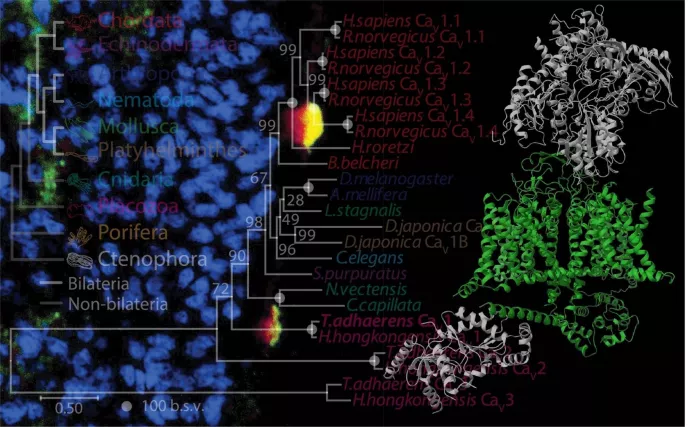
Journal of Biological Chemistry publishes Dr. Julia Gauberg and Senatore team paper
Dr. Julia Gauberg, PhD, and the team from Senatore Lab published their new paper Divergent Ca2+/calmodulin feedback regulation of CaV1 and CaV2 voltage-gated calcium channels evolved in the common ancestor of Placozoa and Bilateria, in the Journal of Biological Chemistry.
https://doi.org/10.1016/j.jbc.2022.101741
CaV1 and CaV2 voltage-gated calcium channels evolved from an ancestral CaV1/2 channel via gene duplication somewhere near the stem animal lineage. The divergence of these two channel types led to distinguishing functional properties that are conserved among vertebrates and bilaterian invertebrates and contribute to their unique cellular roles. One key difference pertains to their regulation by calmodulin, wherein bilaterian CaV1 channels uniquely exhibit pronounced, buffer-resistant Ca2+/calmodulin-dependent inactivation (CDI), permitting dynamic negative feedback regulation of calcium influx in response to local Ca2+ rises. Non-bilaterian, early-diverging invertebrates also possess CaV1 and CaV2 channels, but it is unknown whether they share these distinguishing functional features. The most divergent animals to possess CaV1 and CaV2 channels are placozoans such as Trichoplax adhaerens, which separated from other animals over 600 million years ago. Notably, placozoans lack neurons and synapses where CaV1 and CaV2 channels are known to play unique and critical functions. Altogether, placozoans can provide important insights into the early evolution of CaV1 and CaV2 channels, as they took up different calcium signaling roles in the evolving nervous system.
This recent publication led by former Senatore lab PhD student Dr. Julia Gauberg describes the functional properties of the Trichoplax CaV1 channel (TCaV1), thus completing the functional characterization the Trichoplax calcium channel set (i.e., CaV1 to CaV3 channels). Trichoplax is now only the third invertebrate species (and most divergent) to have its complete set of calcium channels functionally characterized in vitro.
With contributions from Senatore lab colleagues Wassim Elkhatib and Anhadvir Singh, Dr. Gauberg found that the channel is expressed in neuron-like cells that line the periphery of the animal, and contractile cells located along the dorsal epithelium, resembling the expression of CaV1 channels in neurons and muscle in other animals. Using patch clamp electrophysiology, the channel was found to conduct dihydropyridine-insensitive, high-voltage-activated Ca2+ currents in vitro with kinetic properties resembling those of the rat CaV1.2 homologue, but with left-shifted voltage-sensitivity for activation and inactivation. Interestingly, Trichoplax CaV1, but not CaV2, was found to exhibit buffer-resistant CDI, indicating that this functional divergence evolved prior to the emergence of bilaterian animals, and may have contributed to their selective adaptation for cytoplasmic Ca2+ signaling within certain cellular contexts.
Dr. Julia Gauberg is now doing postdoctoral studies at UC Davis.

